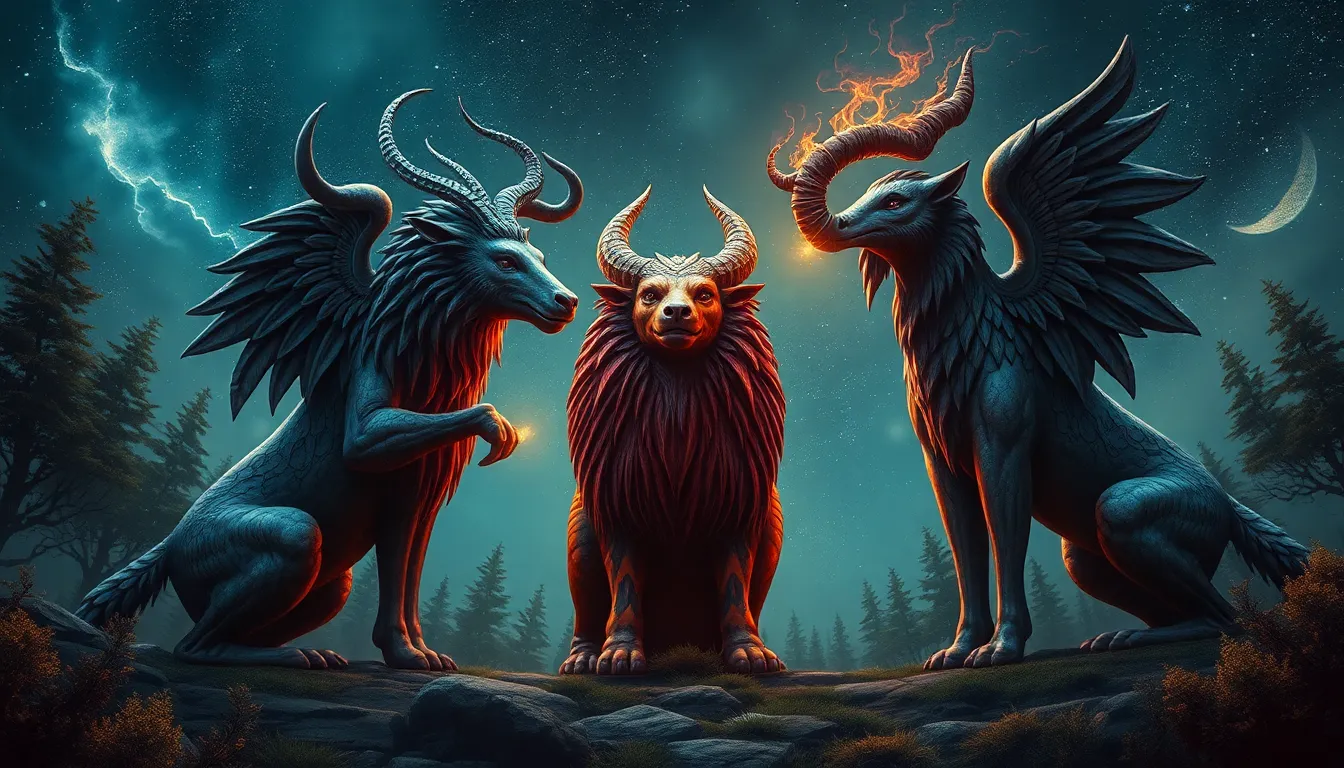The Art of War: 10 Mythological Weapons You Wish You Had!
I. Introduction
Throughout history and across cultures, mythological weapons have captured the imagination of people, embodying the extraordinary powers associated with legendary heroes and gods. These weapons often symbolize not just physical strength, but also ideals like justice, sovereignty, and protection. They serve as a testament to the human fascination with the idea of wielding power, often in the context of warfare and heroism. In this article, we explore ten of the most legendary mythological weapons, each with unique powers and stories that make them desirable artifacts of myth.
II. Excalibur: The Sword of Destiny
Excalibur, the iconic sword of King Arthur, has its roots in Arthurian legend, symbolizing the rightful sovereignty of the king. According to various tales, Excalibur was either bestowed upon Arthur by the Lady of the Lake or pulled from a stone, demonstrating his divine right to rule.
The sword represents more than just a weapon; it embodies the ideals of chivalry, justice, and honor. It is often depicted as being unbreakable and capable of cutting through anything, signifying the strength of the rightful king.
- Symbolism: Kingship and rightful rule
- Powers: Unbreakability and unmatched sharpness
- Enchantments: Gives its bearer the right to rule
III. Mjölnir: Thor’s Hammer
In Norse mythology, Mjölnir is the hammer wielded by Thor, the god of thunder. This weapon is not just a tool of destruction; it is also a symbol of protection and strength, often used to defend the realms of gods and men against giants and other threats.
Mjölnir is renowned for its ability to summon thunder and lightning, making it a formidable weapon in battle. It is said that no matter how far Mjölnir is thrown, it will always return to Thor’s hand, showcasing its loyalty to its master.
- Significance: Control over thunder and lightning
- Symbolism: Strength and protection
- Legend: Thor’s unmatched prowess in battle
IV. The Trident of Poseidon
The Trident of Poseidon, the Greek god of the sea, is another legendary weapon with immense power. It symbolizes Poseidon’s dominion over the oceans and his ability to control storms and earthquakes. The trident is often depicted as a three-pronged spear that can create waves, calm the seas, or summon monstrous creatures from the deep.
Poseidon’s authority over water is reflected in his role as a protector of sailors and as a deity who could bring both bounty and destruction. The trident has appeared in various cultural representations, emphasizing its significance in Greek mythology.
- Powers: Control over oceans and storms
- Cultural Impact: Representations in art and literature
- Legendary Role: Protector of sailors
V. The Bow of Artemis
Artemis, the Greek goddess of the hunt, wields a bow that is famous for its unparalleled accuracy and deadly precision. The bow represents the skill and agility of the huntress and embodies her connection to nature and wildlife.
In various myths, Artemis uses her bow to protect the innocent and to bring swift justice to those who threaten her realm. The bow, often described as made from the finest materials, serves as both a weapon and a symbol of her independence and strength.
- Features: Unmatched accuracy and deadly precision
- Symbolism: Independence and protection
- Mythical Stories: Tales of her battles and protection of wildlife
VI. Gáe Bulg: The Cursed Spear of Cú Chulainn
Gáe Bulg, the legendary spear of Cú Chulainn, is steeped in tragedy and power. According to Irish mythology, this spear is known for its lethal effectiveness, said to inflict devastating wounds that could not be healed.
The spear is associated with a curse that brings misfortune to its wielder, adding a layer of complexity to its power. Cú Chulainn, a hero known for his unmatched fighting skills, faced many challenges, and wielding Gáe Bulg ultimately contributed to his tragic fate.
- Unique Properties: Incurable wounds and deadly impact
- Significance: Represents the duality of power and tragedy
- Legend: The fate of Cú Chulainn
VII. The Golden Fleece
The Golden Fleece is a powerful symbol in Greek mythology, associated with the quest of the Argonauts. This fleece not only represents prosperity and power but also serves as a protective talisman.
The quest for the Golden Fleece was a pivotal moment in the myth of Jason and the Argonauts, where the fleece was said to grant its possessor immense power and protection. Its allure brought together heroes, ensuring alliances and showcasing the importance of unity in battle.
- Legend: The quest of the Argonauts
- Symbolism: Power and prosperity
- Role in Warfare: A unifying artifact for heroes
VIII. The Shield of Aeneas
The Shield of Aeneas, described in Virgil’s “Aeneid,” is a remarkable artifact that depicts the history and fate of Aeneas and the future of Rome. This shield serves as both a protective item and a prophetic symbol.
Its detailed illustrations provide insight into Aeneas’s journey, showcasing important battles and events that shaped his destiny. The shield’s magical properties not only offer protection but also foretell the future, making it a unique weapon in the realm of myth.
- Origin: Virgil’s “Aeneid”
- Depictions: History and fate illustrated on the shield
- Nature: Protective and prophetic
IX. The Sword of Gryffindor
The Sword of Gryffindor, from the Harry Potter series, is a magical weapon that embodies bravery and courage. Forged by goblins, this sword possesses the unique ability to absorb that which makes its wielder stronger.
The sword is not just a weapon but also a symbol of Gryffindor House, representing the qualities of courage and determination. It has been wielded by some of the most notable characters in the series, making it a cherished artifact among fans.
- Origin: Forged by goblins
- Magical Qualities: Absorbs the strength of vanquished foes
- Symbolism: Bravery and courage
X. Conclusion
The mythological weapons explored in this article not only serve as fascinating elements of their respective stories but also embody deeper meanings and ideals within their cultures. From Excalibur’s representation of rightful kingship to the protective nature of Mjölnir, each weapon tells a story of power, sacrifice, and heroism.
These legendary artifacts continue to inspire, reminding us of the timeless allure of heroism and the eternal quest for strength in the face of adversity. Whether in literature, film, or folklore, these weapons remain potent symbols of the human spirit and the never-ending battle between good and evil.



